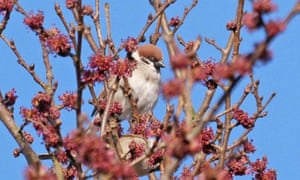The wych elm, Ulmus glabra, tall as a two-storey house, arching over the lane, had been hiding in plain sight. We must have walked under it scores of times but hadn’t paid attention until today, when its flowering canopy, with starbursts of crimson stamens clustered along every twig, stopped us in our tracks.
Such sights had been a distant memory. When I was a child in the 1950s, lofty English elms, U procera, home to a cacophonous rookery, cast shade over the barns on the farm in Sussex where my grandmother worked. In the 1970s, when we lived in Warwickshire, rows of giant elms were the guardians of field boundaries, as quintessentially English as a Constable painting.

And then, in little over a decade, they were nearly all gone, laid low by a virulent strain of the fungus Ophiostoma novo-ulmi, Dutch elm disease, originating in Asia but characterised by mycologists in the Netherlands. The pandemic was transmitted via elm bark beetles but was carried across continents by the timber trade, attacking almost every Ulmus species in its path. Laid low, because it didn’t kill the trees outright. Trunks died but roots survived, sprouting suckers that succumbed again when their girth was sufficient to attract bark beetles.
Suckering makes elms easy to propagate quickly from cuttings, a tendency exploited by the Romans for raising saplings that supported their vines. Genetic research in Spain in 2004 demonstrated that when the legions invaded Britain, and vineyards were established, they introduced U procera to the English flora, importing a single seed-sterile Iberian clone. Two millennia later, it proved uniformly vulnerable to the devastating fungal pathogen.

As we stood underneath our wych elm, a gentle shower of stamens fell on to the road; tree sparrows were feeding on the flowers. Nationally, the population of these chestnut-crowned finches has fallen by more than 90% since 1970, but is now recovering. I see them almost as often as house sparrows. They have adapted to life in gardens, and nest in ours.
We walked home reflecting on vulnerability, resilience and genetic diversity, nature’s insurance policy in times of adversity. The adaptability it confers on tree sparrows may be reversing their decline; uniformity in elms guaranteed their eventual downfall.